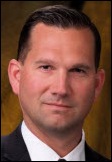HIStalk Interviews Mark Debnam, Founder and CEO, Quality IT Partners
J. Mark Debnam is founder and CEO of Quality IT Partners, Inc. of Mt. Airy, MD.

Give me a brief overview of yourself and the company.
I founded the company in 2000. My first partner, Marty Zola — he’s our chief technology officer – joined about three months later, followed in 2001 and in 2003 by our final two partners, who are with us still today — Carol Wheeler and Donna Eversole.
We are very family-oriented company here. We’re a small company, about 20-25 folks, and we specialize in healthcare IT. We cover just about everything out there. We have seven different application practice areas. We have eight management consulting-focused areas as well. We also do a lot of work in the hospital and medical office building architecture and construction work, in addition to infrastructure.
We just this year celebrated our tenth anniversary. We did it in Hershey Park, Pennsylvania, so it was a lot of fun. We just got back from that. Every year we do that — we fly everybody and their families and to enjoy time together and get to spend that time that we rarely get together.
The company’s been around for 11 years and clearly there have been some new shingles hung out here in the last couple. Do you think the barrier to entry is too low for consulting companies and should a prospect care about the company history when they’re trying to decide who to hire as a consulting firm?
That’s a great question. I think there’s always room for great companies to get into our market space. As time goes by, there’s less and less differentiators, so it becomes highly important to develop a strong differentiation between yourself as a small company.
When I started the company, it was intensely difficult to get in and be a player without good, solid qualifications and stories and references and all that. You have to really a compelling background and a compelling story about what you’re doing and why you’re doing it. You know, that really hasn’t stopped.
There’s a reason we’ve stayed small. As a company, we have always focused on the highest quality of delivery of service. We’ve grown steadily and we’ve had a profit every year since I’ve started the company. The key here is being able to really develop a strong sense of differentiation in the marketplace so that folks can see what they’re going to get in terms of value. People are very discriminating. Our clients are telling us they want more now than they ever have.
There’s never poor time to get in if you have a compelling story. One of those compelling stories, particularly in the consulting field, is how you interact with and how you provide the best environment for your consultants and the folks that you have on board in terms of support and things like that. It’s a tough, tough business. That’s probably the main reason why we have such a family-type environment here at Quality.
A big company would say their size is a positive differentiator just as you would say your small size is a plus. But one thing that seems to stand out on your Web site is the value-based cost structure. Describe that.
We keep our overhead cost extremely low. By doing so, we are able to keep our rates low. We’re very cost-conscious in our investments, but we don’t shortchange the key investment areas in any way, shape, or form.
We’re very strong on education and benefits and so forth within the company, but we don’t go out and acquire things that are expensive in terms of overhead costs, like extraordinary office space or elaborate anything. We keep things here in a very modest way so that our staff can reap the benefits of their hard efforts. That’s a big, big part.
Our officers of the company don’t get exorbitant salaries or anything like this. We put our people first and our customers right behind that.
I think that as far as keeping the cost down for our customers, it’s been a big, big plus for us. When you are a small company, I think there’s an expectation that we’re not going to hit you with a high cost. On the flip side of that, there has to be a reason why a customer would be compelled to pay you anything to come do work for them.
We have a tremendous performance record and we’re very blessed to have that. We have just a wonderful team of folks that have a reputation for delivering very high-quality service. We have well over 85 to 90% of return customers to the company. We’re very, very proud of that, but you have to earn that every day. I think our customers see the value for sure in what we do.
The consulting company executives that I talk to say their phone’s ringing off the hook with people wanting to buy their business or buy into their business. Are you getting those calls, and why do you think companies want to buy consulting companies?
We get serious calls. There have been a lot of them I’ve received over the years. They know a little bit about what you do and what you’ve done and they’ve heard through the grapevine, etc. I think that they see that as an opportunity to get into the market or expand their current offerings that maybe they don’t have, and be instantly profitable.
If they can retain staff, that’s a huge plus for them to not have to go through a process of having to go and hire people. The time it takes to bring all new staff and build a staff versus the time it takes to acquire a consulting company are vastly different. You can bring on a team in an acquisition very quickly. I think that would be one of the reasons why folks like getting into that business.
I’ve always wanted to ask this question after I’ve looked at the job ads. What does it take to hire an Epic consultant these days?
You ask a good question there. It takes reputation, it takes a very compelling story; and it takes a special match — let’s be realistic about it — between what the person’s desires are and what the company’s made of.
We’ve been very fortunate. Our largest team here is Epic. We have a very broad spectrum of folks of all ages and genders. I think mostly that they seek to expand their education. We see a lot of that — folks that want to continue and expand in their certifications. For Epic, that’s a big, big thing. They need to be with a company that will support that.
The folks that come from Epic tend to not want to live that lifestyle any more. We’re very, very different in the way we do things here. We don’t kill our people. We’re very, very cautious in watching out for the welfare of our people, and we find that in other consulting firms or Epic, this is maybe not so much the case in a lot of ways.
When folks come here, it’s not that they want to take a relaxed lifestyle. They just want a strong work-life balance. The company’s committed and convicted to that philosophy. Not burning out the people. People also want to know that they’re going to be working with other folks that are of great caliber, and that they can learn from and grow with them.
Business continuity and disaster recovery are always in the news. What are the top two or three things you see clients doing wrong or not planning for?
It’s the last thing that folks want to pay for and it’s the first thing they want to have when it happens. We, fortunately, have been blessed with working with a lot of customers, like Ohio State University. The common thread is those organizations are committed to really doing it right and doing it thoroughly and have a good plan. Others that will try to do it internally and there’s sometimes a lot of struggles with that.
A business continuity plan is often best facilitated — and I don’t mean this as a consulting plug – by someone with an outside viewpoint. Folks don’t always really understand some of the ramifications of what can happen in a disaster. We’ve done a lot of work in California related to the earthquakes. We had a hospital in Florida hit by a large hurricane right after we had finished up our business impact analysis for them. Fortunately, they had some things to fall back on. These things happen and they’re real. There are some obvious and quick benefits that can come from even a cursory business impact analysis.
A lot of what the consulting companies are asked to do is fairly routine work. Have you seen anything really cool that hospitals are doing?
There’s a number of things that folks are taking on. You publish a number of exciting things that folks are doing with different types of media and hand-held devices.
We have a couple of neat projects that we’re working on. One of which is an imagery project for a large, California-based medical center, cutting edge in real-time capture of image retrieval and large-scale storage of things like sonograms, cardiology, and all these things. There’s really, really cool stuff. We’re leading and implementing a project out there and managing multiple vendors. It involves a lot of challenges. It involves a lot of hand-holding between the vendors, which sometimes you don’t get a lot of cooperation on.
Our customer is taking quite a risk and quite a position of conviction to invest in this technology and hospital doctors are loving it. It’s one of these things where if they get that kind of attention and they get these opportunities to work with those systems, they’re going to be attracted to stay in practice there. We’re working hand-to-hand with these physicians in delivering these technologies. It’s been wonderful, but it has not been trouble-free. It is absolutely bleeding edge technology in a lot of ways and we’ve been fortunate to be amidst that and be leading a project. We’re going live on it as we speak.
Hopefully you’re not getting a call waiting that says, “Uh, it’s not working.”
[Laughs] It’s been a challenge and a labor of love, let me tell you. But it’s great to see this kind of investment.
You offer interim management services. From your experience, is the most common reason that hospitals and CIOs part ways?
I think the most significant reasons are organizational direction and changing of the business ways. Hospitals operate as businesses. There are so many wonderful CIOs out there. A lot of times, though, when you have a change in business philosophy — whether that be through infusion of the business leaders or other means — you have a difference of opinion that comes to bear. “Well we’ve done this a certain way, it’s been done this way successfully, why should we change it?”
Well, because the business is changing. The hospital is run like a business first. If a CIO is not able to put on their business cap before they put on their technology cap, that’s a concern for that CIO, unfortunately. They could be the brightest, the most brilliant of people and yet not have the ability to make it within that organization.
Projects fail. Sometimes they aren’t the fault of the CIO or any other leadership, and sometimes they are, but when you have a big failure of a project and things just don’t go well, that’s usually not a good marker for a CIO to make it. The higher the visibility, the higher the possibility that the CIO is going to be leaving.
Do you have any final thoughts?
I want to reflect on how great our relationship with HIStalk is and how grateful we are to be part of your family.
One the things we’ve taken on here as a very, very important endeavor is our investment and our commitment to charitable causes. If you look at our Facebook page, you’ll see a video that we captured to reflect our works and our investment and our time with the Cleveland Clinic. We have a very successful project going on there in oncology. We’ve written many of the protocols there for the oncology group at Cleveland Clinic, so we’re very highly connected with them.
I had the honor of being at their gala last year and being part of their big show and doing part of their private gala. I had the opportunity to meet all of the celebrities there, spent some time with Brad Paisley. It was wonderful. I was very inspired by that. I’m a musician — I’ve been playing guitar for about 32 years this year. I know you like music.
I came back and wrote a song. We copyrighted that song and as part of the company, I dedicated it to the Cleveland Clinic. We posted it to our Facebook page and then you guys published it as well, which was delightful. We’re very interested in helping to find a cure for cancer.
This is a big thing, among other big things. You’ll see other charitable things. It’s a big, big part of what we want to be. We all go through various challenges in our lives. We really want to bring home the things in life that matter to this company in not just business, but things that affect us all when we’re trying to do business. I just want to leave you with that thought — that the company is very committed to that.
In addition to our appreciation for everything you’ve done for us and helping us get out there and inform the folks, we’re very blessed to have the clients we have, and in having this wonderful staff of folks here on our team and that we’ve had in the history of the company.

















I dont think anything will change until Dr Jayne and others take my approach of naming names, including how much…